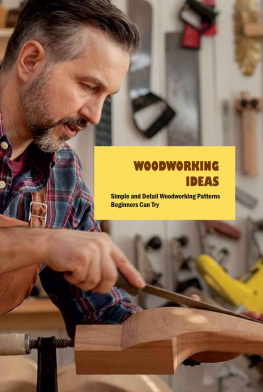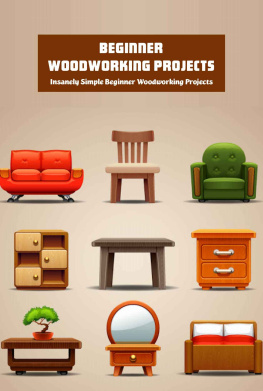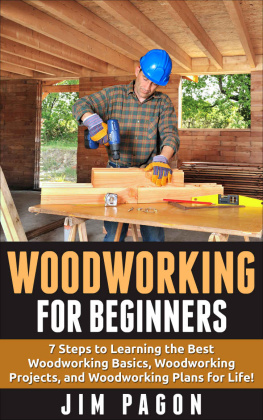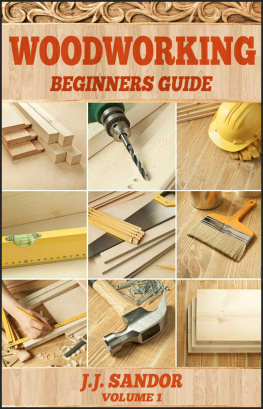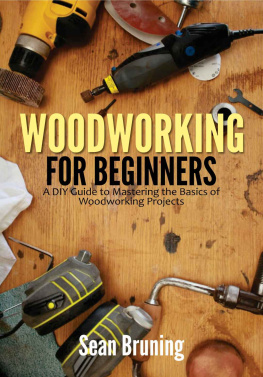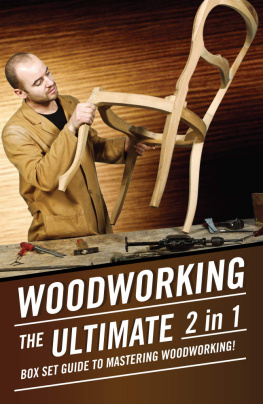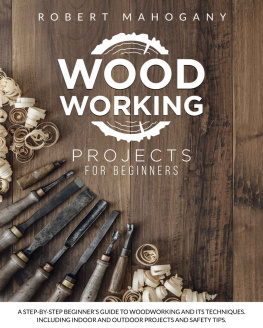Pecoraro - Woodworking, Beginners guide to Build 18 Household Projects 2 Books in 1
Here you can read online Pecoraro - Woodworking, Beginners guide to Build 18 Household Projects 2 Books in 1 full text of the book (entire story) in english for free. Download pdf and epub, get meaning, cover and reviews about this ebook. year: 2020, genre: Home and family. Description of the work, (preface) as well as reviews are available. Best literature library LitArk.com created for fans of good reading and offers a wide selection of genres:
Romance novel
Science fiction
Adventure
Detective
Science
History
Home and family
Prose
Art
Politics
Computer
Non-fiction
Religion
Business
Children
Humor
Choose a favorite category and find really read worthwhile books. Enjoy immersion in the world of imagination, feel the emotions of the characters or learn something new for yourself, make an fascinating discovery.

- Book:Woodworking, Beginners guide to Build 18 Household Projects 2 Books in 1
- Author:
- Genre:
- Year:2020
- Rating:3 / 5
- Favourites:Add to favourites
- Your mark:
- 60
- 1
- 2
- 3
- 4
- 5
Woodworking, Beginners guide to Build 18 Household Projects 2 Books in 1: summary, description and annotation
We offer to read an annotation, description, summary or preface (depends on what the author of the book "Woodworking, Beginners guide to Build 18 Household Projects 2 Books in 1" wrote himself). If you haven't found the necessary information about the book — write in the comments, we will try to find it.
Pecoraro: author's other books
Who wrote Woodworking, Beginners guide to Build 18 Household Projects 2 Books in 1? Find out the surname, the name of the author of the book and a list of all author's works by series.
Woodworking, Beginners guide to Build 18 Household Projects 2 Books in 1 — read online for free the complete book (whole text) full work
Below is the text of the book, divided by pages. System saving the place of the last page read, allows you to conveniently read the book "Woodworking, Beginners guide to Build 18 Household Projects 2 Books in 1" online for free, without having to search again every time where you left off. Put a bookmark, and you can go to the page where you finished reading at any time.
Font size:
Interval:
Bookmark:
- Cut all of the joinery while the stock is still square, yet first take a few moments to make a template for your leg shape, and utalize it and a bevel gauge to mark the legs and aprons for the curves and tapers youll cut later.
- To join the narrow legs and aprons, I interlocked the mortiseand-tenon joints.
- I routed the mortises and cut the tenons at the tablesaw.
- Once cutting the tenons, test each setup on sample material until the machines and jigs are dialed in. utalize a marking gauge to lay out the shoulders and cheeks on each piece.
- Clamp a stop to a crosscut sled for cutting the shoulders.
- Cut all the wide exteriors first, and then adjust the blade to the appropriate height for cutting the shoulders on the apron edges.
- Prior to making this cut, put a piece of blue tape on the stop to offset the shoulder rather.
- This leaves a small strip of extra material on the shoulder that can simply be pared flush.
- I used a tenoning jig to cut the cheeks, then a bandsaw to eliminate the remaining waste at the ends and in the the tenons.
- Clean up and fit the joints with chisels and files.
- I round my tenons instead of chopping the mortises square.
- Once all the joinery is cut, saw the drawer front from the front apron.
- Then, dry-fit the end assemblies and measure the inside distance in the the front and rear aprons to determine the length of the interior rails.
- For greatest accuracy, take this measurement as close to the legs as possible.
- The drawer enclosure is formed by a pair of interior rails, each rather narrower than the aprons that run front to back and guide the drawer sides.
- Each rail is joined by dowels to the front and rear aprons and rabbeted along the bottom to accommodate a framed panel.
- This panel closes the compartment, adds rigidity, and supports the drawer from underneath.
- For smooth drawer movement, the interior rails must be parallel to one another, with dowel joints that are specifically aligned, front to back.
- To precisely lay out the joints on the face of the rear apron, I used the front aprons as a reference.
- A jig aids doweling, I drilled my dowel holes utalizing a shopmade jig created especially for this venture.
- To drill a front apron, set the jig in place so its reference face is flush with the aprons interior edge.
- Clamp the jig temporarily while you fasten it with a couple of brads.
- At the drill press, take a moment to set the bit depth, utalizing the layout for your shaping as a guide.
- Drill through your layout marks, simultaneously completing the jig and drilling your first set of dowel holes.
- After drilling the apron, cautiously align the jig on the end of the corresponding rail and drill the mating holes.
- Repeat the procedure on all the aprons and corresponding rail ends.
- Once all the holes are bored, test the fit.
- One way to streamline the test-fitting of dowel joints is to utalize dowels in just half the holes.
- It likewise helps to compress them by rolling them in the file and your bench.
- This keeps the dowel holes from loosening while multiple dry-fits.
- The drawer pockets bottom is a panel set in a frame held together with bridle joints.
Font size:
Interval:
Bookmark:
Similar books «Woodworking, Beginners guide to Build 18 Household Projects 2 Books in 1»
Look at similar books to Woodworking, Beginners guide to Build 18 Household Projects 2 Books in 1. We have selected literature similar in name and meaning in the hope of providing readers with more options to find new, interesting, not yet read works.
Discussion, reviews of the book Woodworking, Beginners guide to Build 18 Household Projects 2 Books in 1 and just readers' own opinions. Leave your comments, write what you think about the work, its meaning or the main characters. Specify what exactly you liked and what you didn't like, and why you think so.

